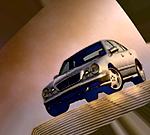Mercedes Benz India reports to BIFR as losses mount
24 Dec 1999
Mercedes Benz India, the Indian subsidiary of world luxury carmaker DaimlerChrysler, has had to report trouble although it says it is doing all right. The trouble is seemingly minor. It has had to report to the Board for Industrial and Financial Reconstruction, which monitors sickness in Indian industry.
The reason: the company’s total losses in nearly five yea rs of operations in the country have touched Rs 336 crore, or more than half of its Rs 600-crore equity capital. This makes reporting to the BIFR compulsory under section 23 of the Sick Industrial Companies Act. In legal terms, this will mean that the company is 'potentially sick'.
rs of operations in the country have touched Rs 336 crore, or more than half of its Rs 600-crore equity capital. This makes reporting to the BIFR compulsory under section 23 of the Sick Industrial Companies Act. In legal terms, this will mean that the company is 'potentially sick'.
The losses clearly indicate problems with Mercedes Benz's Indian operations. The company has attributed its poor showing to various market-related factors, mainly the lack of a market for luxury cars in India. It also says the project had a longer gestation period and higher start-up costs. Besides, it had to incur expenditure on account of financial help to its exclusive vendors. Fluctuations in foreign exchange rates caused a higher outgo on account of duties and taxes.
But the company is putting up a brave face. It says that being 'potentially sick' does not mean that it is sick. It has formulated a strategy to derive maximum benefits from its high start-up costs, which, it explains, are investments that would give returns in the longer term. It asserts that its financial position is strong, and cash is not a problem.
The cost reduction plans, plans for new products, and import of technical knowhow under a renegotiated arrangement are expected to help the company financially. Some of these measures have started showing results the management says. The company posted a marginal profit of Rs 2.6 crore in the year ended 31 March 1999.
Meanwhile, the company has clarified that it will not immediately introduce new models in India. Its MB-100 van, which is at present being imported, may, at a later date, be assembled using CKD kits. The plan to bring in Chrysler models has also been put on hold for the time being.
One of the areas in which Mercedes Benz India expects to gain increased revenue is component export.
The three models of Mercedes Benz cars available in India now – the E250D, E230 and E200 -- will soon be fitted with more efficient, powerful and cleaner engines. The E250, which is a diesel vehicle, will sport the commonrail direct injection, or CDI, engine, which has been proved to be fuel-efficient and compliant with strict emission norms. The engines of the two petrol versions will also be modified.
The company has achieved 50 per cent indigenisation level.
Mercedes Benz India is a 86:14 joint venture between DaimlerChrysler and the Tata Engineering and Locomotive Company.





















